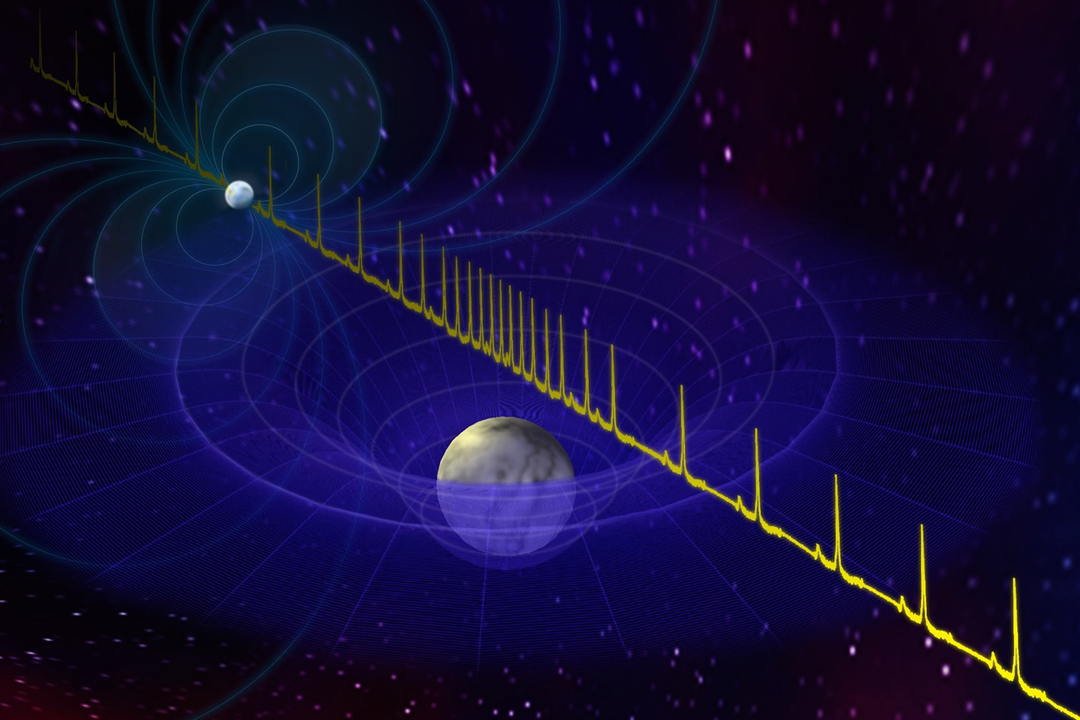Detection of the most massive neutron star known
An extreme cosmic laboratory for nuclear physics
Photo credit: Bill Saxton (NRAO/AUI/NSF)
"The figure shows (top) the good fit of our model used to predict when the pulse arrival times occur, (middle) a bad fit from a nonrelativistic model leaving unmodeled structure behind in the residuals, or the data minus the model, and (bottom) the good fit to our model with a removal of the Shapiro delay signal, showing the excellent consistency with the shape we expect." - Professor Michael Lam
Assistant Professor Michael Lam from RIT and the North American Nanohertz Observatory for Gravitational Waves (NANOGrav), a Physics Frontiers Center funded by the NSF, detected the most massive neutron star known after 5-years of observations, leading to exciting new constraints on exotic types of matter.
Measurements of the arrival times of radio pulses from ultra-precise millisecond pulsars allow for extreme tests of fundamental physics. The North American Nanohertz Observatory for Gravitational Waves observed the pulsar J0740+6620 for five years and detected the Shapiro delay, a relativistic effect caused when pulses travel through the curved space-time of its white dwarf binary companion, most notable when the pulsar appears directly behind its binary white dwarf companion.
Observation of this effect allows for measurements of the mass of the pulsar, allowing us to test different nuclear equations of state in one of the highest-density astrophysical laboratories.
“We found the mass of the pulsar to be 2.14±0.10 times the mass of the Sun, making it the most massive pulsar known to date and providing the strongest possible constraints on the existence of exotic types of matter in the cores of these pulsars,” said Lam.





